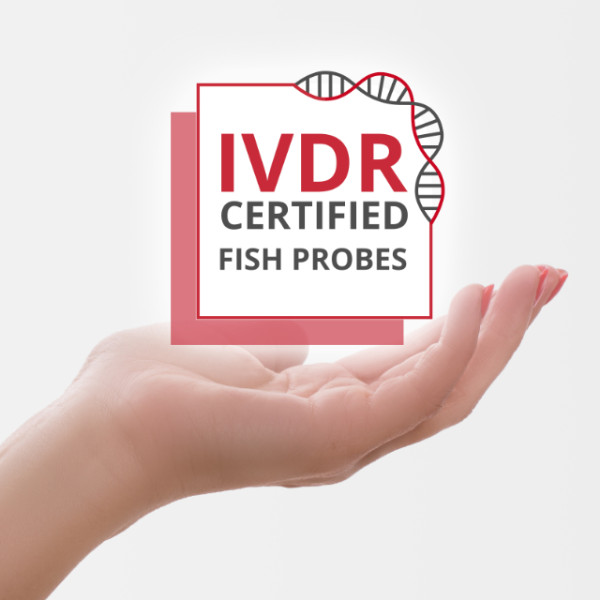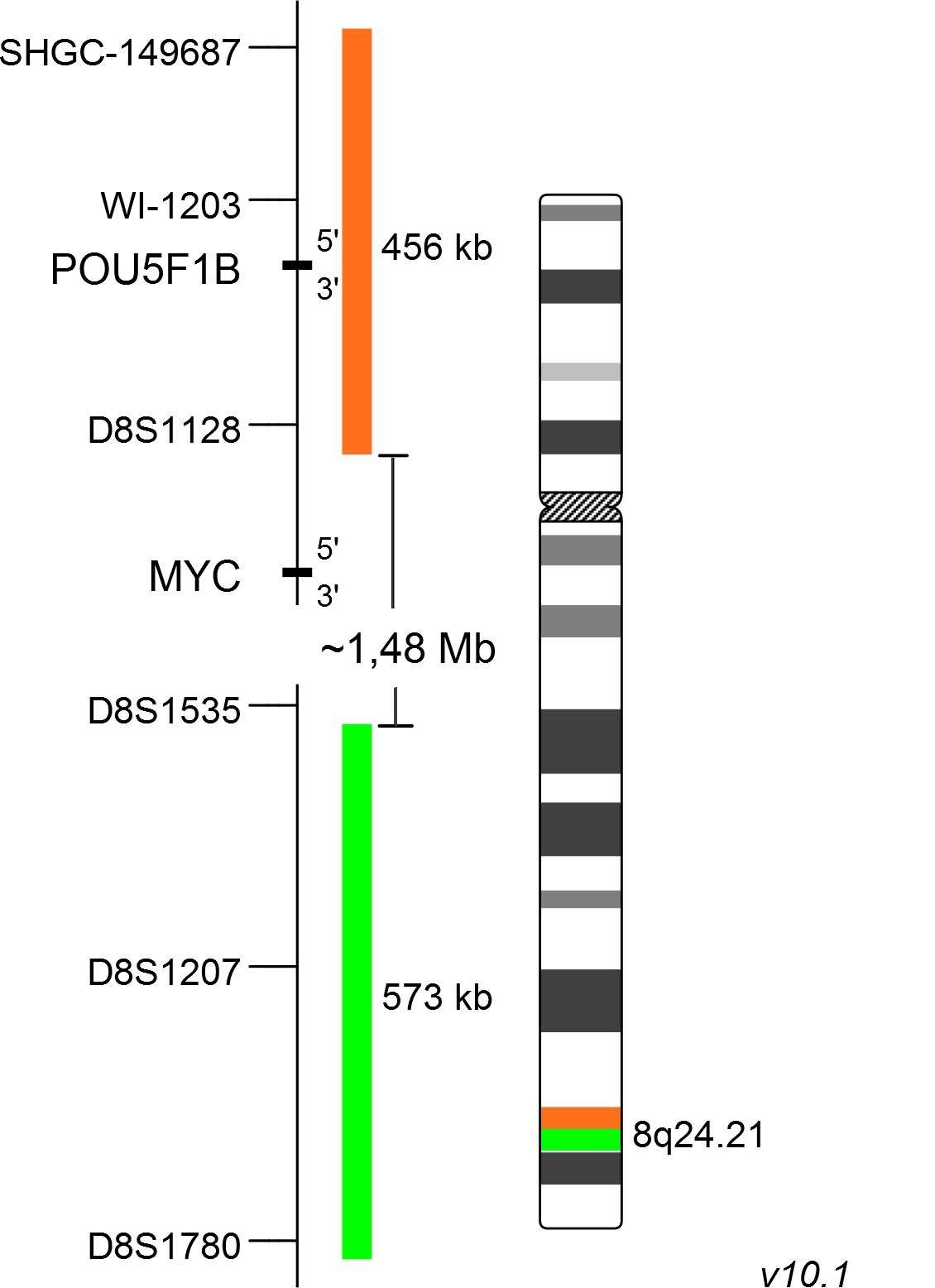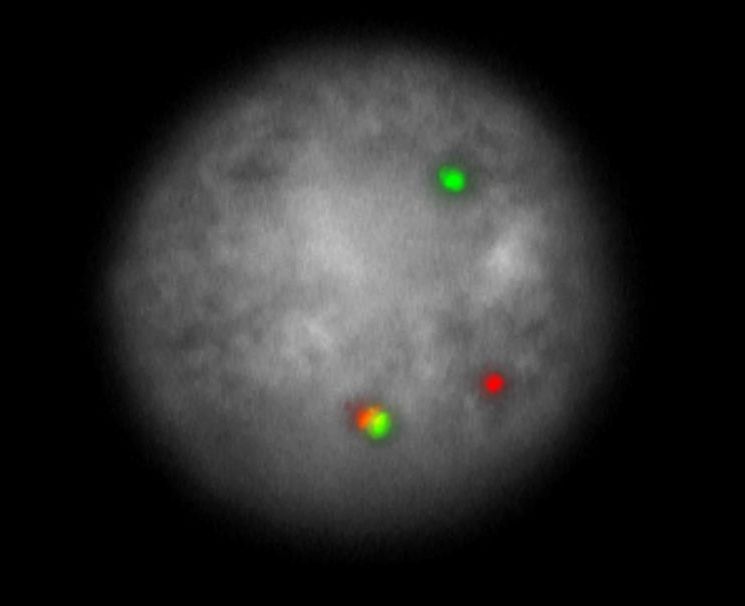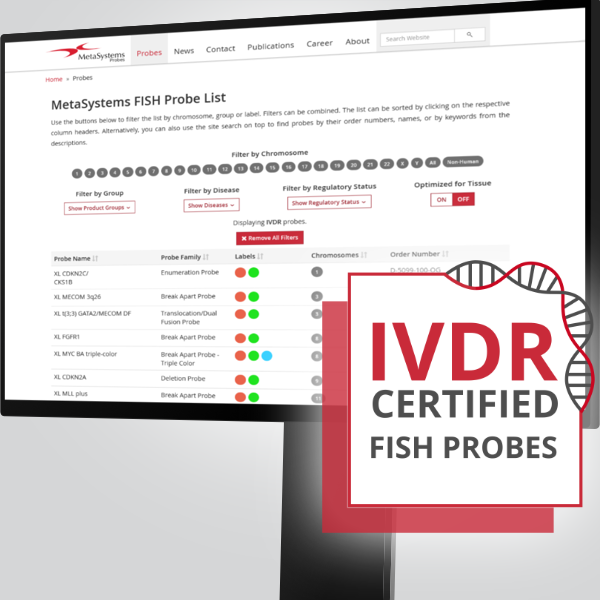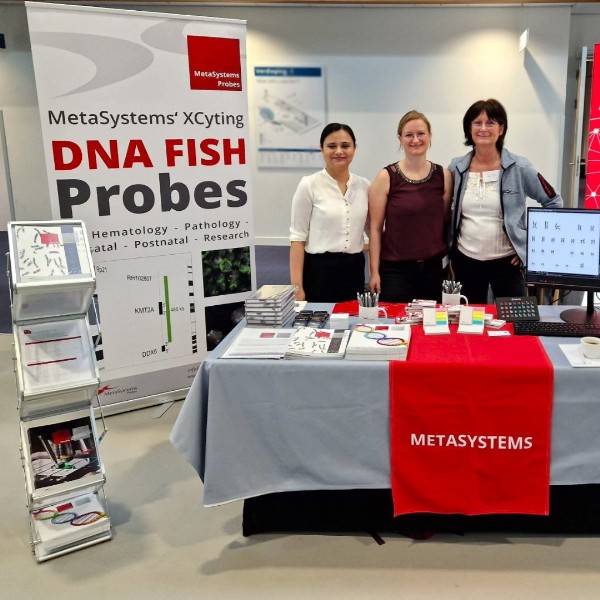Translocations involving MYC are observed in diffuse large-B-cell lymphoma, follicular lymphoma, mantle cell lymphoma, and other lymphomas. In Burkitt Lymphoma, the MYC gene, located at 8q24, is activated by a translocation next to an immunoglobulin constant gene. Most frequently, MYC is positioned near the immunoglobulin heavy-chain (IGH) constant region on chromosome 14q32. However, in some tumors MYC can also be positioned near the light-chain region on chromosome 2p11 (IGK) or 22q11 (IGL). In addtion, other translocation partners have been identified (e.g. BCL11A, PAX5, ZCCHC7).
The XL MYC probe is designed as a break apart probe with two probes juxtaposed and differentially labeled. The proximal and distal regions are sufficiently large to achieve intense signals also on paraffin-embedded tissue sections. The wide gap between the orange and green part of this probe allows for the detection of the t(2;8) translocation as well as t(8;14) and t(8;22).
Clinical Applications
- Non-Hodgkin Lymphomas (NHL)
- Solid Tumors (Solid Tumors)
